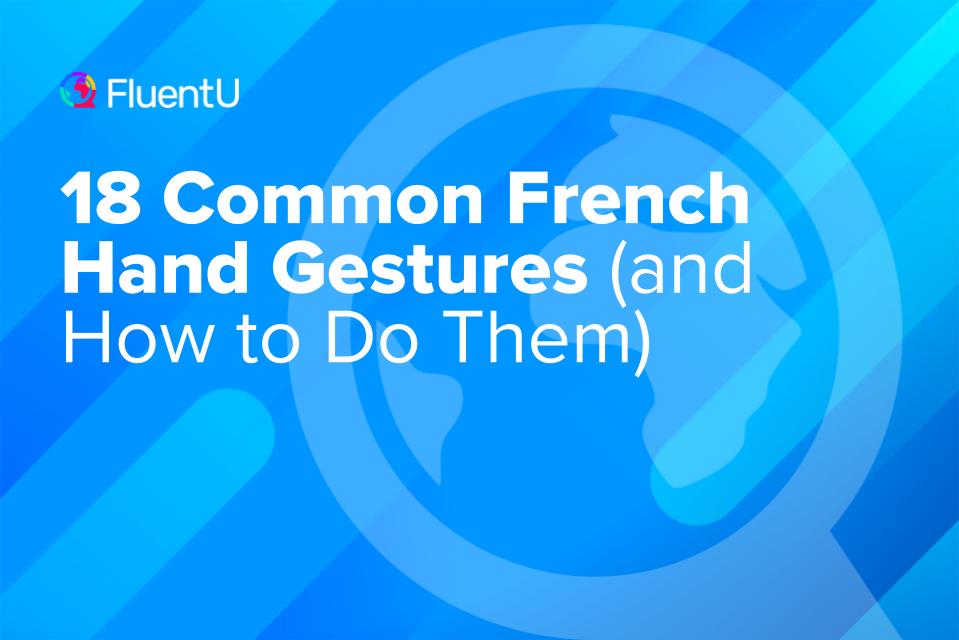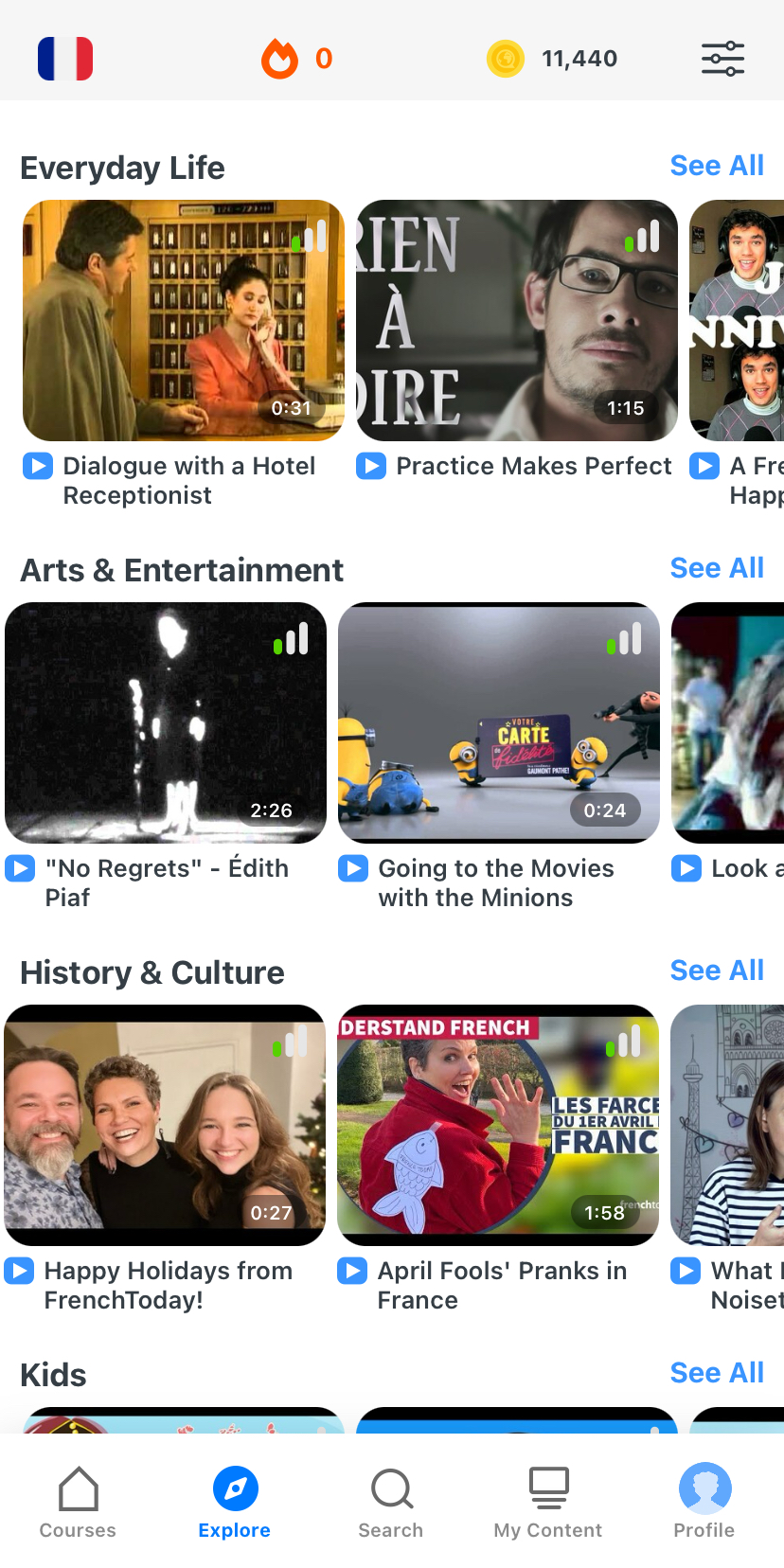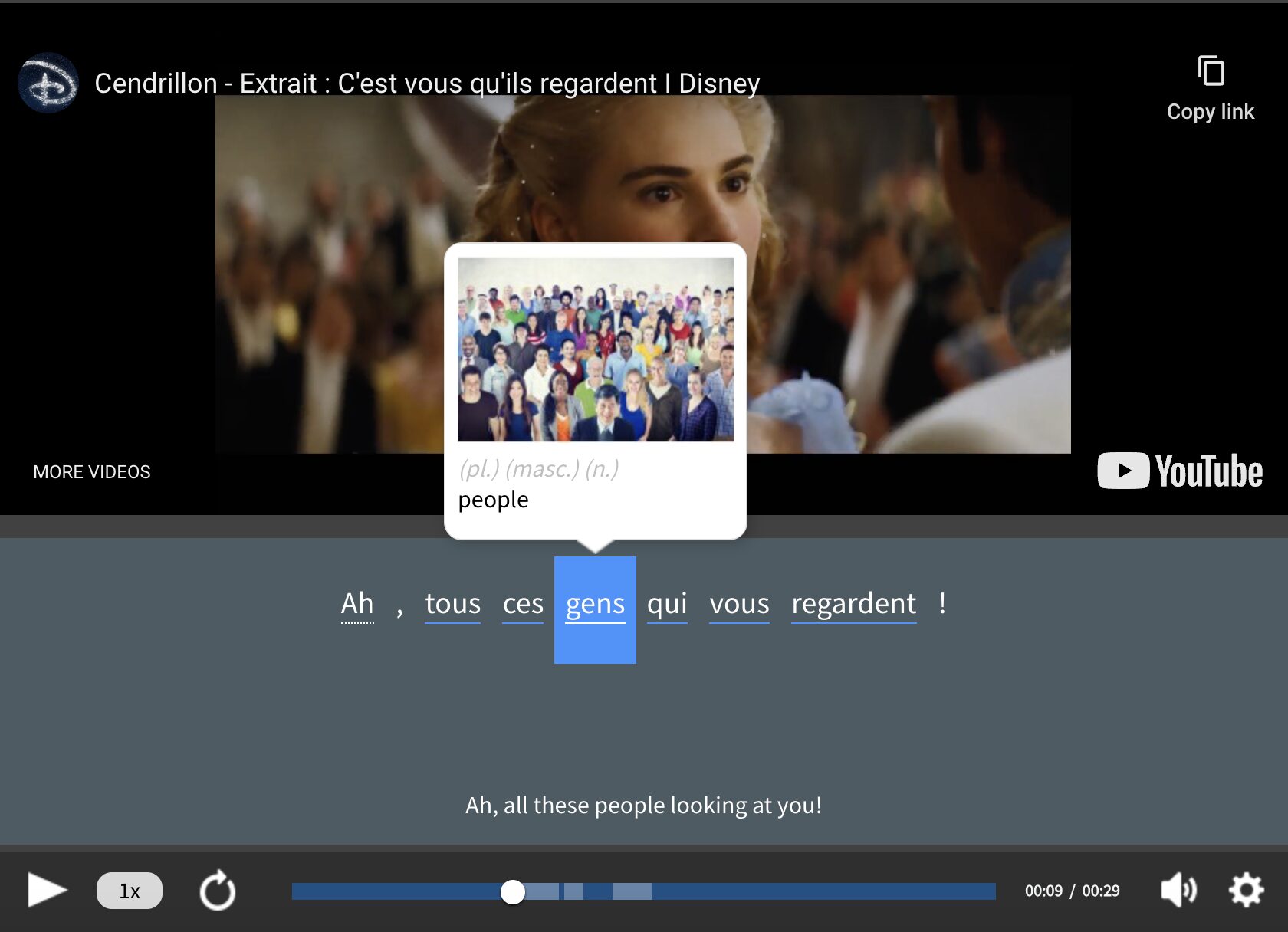Contents
- 1. I Don’t Have Any
- 2. I Don’t Approve
- 3. He/She Is Drunk
- 4. I Don’t Know or Care
- 5. This is Delicious!
- 6. I’m Suspicious/I Don’t Believe You
- 7. I’m Clever!
- 8. Someone’s Got Trouble Coming!
- 9. What a Fool
- 10. Let’s Get Out of Here
- 11. He’s/She’s Crazy
- 12. I’m Over It
- 13. Got It!
- 14. It’s Going to Be Great!
- 15. It’s Not My Problem
- 16. Get Lost!
- 17. It’s Expensive
- 18. Oh-la-la
- And One More Thing...
18 Common French Hand Gestures (and How to Do Them)

French-speaking people have their own set of unique and expressive hand gestures. So if you want to seem like a local, you can’t use the same old hand gestures of your own country. You have to learn the French ones.
In this post, I’ll explain the 18 most useful hand gestures that I’ve found for speaking and understanding real French. Wait until you see how French number 12 is.
Download: This blog post is available as a convenient and portable PDF that you can take anywhere. Click here to get a copy. (Download)
1. I Don’t Have Any

If somebody asks you if you have any sugar, books, money—of any material thing, really—you can say que dalle (absolutely zilch), or you can just bite your thumb and flick it outwards. It’s rather emphatic, and so could be taken as a bit rude. (If you do have some of the thing, then don’t use the gesture! Nod instead and say oui.)
2. I Don’t Approve

You can’t have a proper French conversation without being disgusted or disdainful. Pucker your lips, narrow your eyes and look bored.
For example, just this morning, I made a huge American breakfast for three French girls. “Wouldn’t you like some ketchup on your hash browns?” I said. “Mmmmmm, ketchup!”
One of the French girls narrowed her eyes and made exactly this face; another went to fetch the pains au chocolat (chocolate croissants).
3. He/She Is Drunk

In many cultures, we lift an imaginary bottle to our lips to indicate that someone else is drunk. In France, we can do that too, but the truly French way is to raise your fist in front of your nose and twist it like you’re rev-ing a motorcycle.
The expression that can accompany this gesture of drunkenness is il a un coup dans le nez (literally, “he has a drink in the nose”). The gesture may help you remember the phrase and vice versa.
Note that the gentleman above tilts his head slightly in the direction opposite to the twisting in order to provide more emphasis. When performed in real life, however, the gesture should be accompanied with a lot of laughing, rib-poking, etc. For obvious reasons, try to remember not to perform the gesture with the same hand bearing your drink.
Hilariously for such a peculiar gesture, young people leaving French-speaking lands for the first time are often shocked when they discover that twisting at their noses is meaningless in other cultures.
4. I Don’t Know or Care

To show that you just don’t know (or care), raise your hands to shoulder height.
I employ this gesture when I don’t understand someone, or I haven’t been listening, but I can tell from the upward inflection that I’ve just been asked something. It doesn’t make me seem any smarter, but it does make me at least look like a fluent French speaker.
5. This is Delicious!

This is a bit more Italian than French (after all, it expresses positivity and enthusiasm), but the French do actually use it, particularly in reference to food, drink, or a job well done. Kiss your fingers, spread them outwards, and say magnifique (fabulous).
6. I’m Suspicious/I Don’t Believe You

To show that you’re suspicious or that you think that the person you are addressing may be lying, put one finger on your eyelid and pull it down a little bit.
The accompanying phrase is mon œil (my eye). I’m not sure where this nice girl learned English, but where I come from the equivalent expression is “my a**,” not “my foot.”
This gesture is very common. If it helps you to remember, you can think of it as a way of showing that you see through someone’s lies. Has a beautiful French woman just told you that she’ll love you forever and ever, in spite of your foibles and farts? Put your finger on your lower eyelid, and pull down.
7. I’m Clever!

While we’re signaling at our faces, the j’ai du nez (I’ve got a nose for it) gesture is a bit similar. More informally, the accompanying expression is j’ai du pif. It means that the speaker thinks she is clever, she gets it or she has a talent for the subject at hand.
Tap one side of your nose with your index finger, and then brag about whatever you think you have a flair for.
8. Someone’s Got Trouble Coming!

This is a fun one. Hold your arm bent in front of you with your palm just in front of and facing your chest. Keep your fingers apart, and shake your hand, saying aïe, aïe, aïe, aïe, aïe! This shows that danger is imminent.
Obviously, the danger referred to in most daily conversations is rather low-key. Has the coffee been served too hot? Is your mother coming to visit? Break out this gesture.
9. What a Fool

This is probably the least commonly used gesture in this list, but it’s one that I happen to like and find useful. To show that someone is annoying or boring, you can say quelle barbe (what a beard) and stroke your jowls with the back of your fingers.
It is more likely to be used by parents of young children or in professional environments where people feel inhibited from using the more vulgar words that they would usually use to describe such a person. According to some speakers, it reflects the scraping irritation of les bises (kissed greetings) with someone who has an itchy short beard.
10. Let’s Get Out of Here

This gesture is unbelievably useful; if you learn just one thing from this post I hope that this is it. You’ll particularly want to deploy this gesture at the end of a night out when you need to signal to a companion, perhaps discreetly in the middle of some situation, that you really think it’s time to head out.
To do it, slap the back of one hand with the other hand. You’ll also see people hit the back of their hands, knock their wrists together, or chop the sides of their hands together. It’s pretty informal, so use it with care if you’re in a professional setting.
11. He’s/She’s Crazy

While similar to the loopy-head gesture that Americans make, the French version is different enough to bear mentioning. To do it, you should tap the side of your head to indicate that someone is nuts (I’ve noticed that Russians do this too, by the way).
Or—and this is the funner version—you can touch the side of your head with your index finger and twist, like you’re screwing out your brains. These are the possible phrases to accompany it:
- Il est fou./Elle est folle. (He’s crazy./She’s crazy.)
- Il est ouf./Elle est ouf. (He’s bonkers./She’s bonkers.) The more informal, verlan version. For some strange reason, there is no verlan-ed version of folle, and ouf is used for both genders. Be careful, as in some contexts, ouf also means fabulous or amazing.)
- Il est cinglé./Elle est cinglée. (He’s completely nuts./She’s completely nuts.)
12. I’m Over It

When someone is talking about something stupid, when you’re sick and tired of waiting in line or when you can’t even think about your ex-boyfriend again, perhaps you are truly over it.
When this feeling of annoyance strikes, use this handy gesture, where you swipe your hand horizontally over your head. Another version is to join your thumb and index finger as you make the same swiping motion over your head.
Don’t confuse this with “over your head, which is a similar action in English hand gestures.
13. Got It!

If someone tells you something twice, or they give you a signal from across the room (perhaps saying they want to leave the party soon), you have a chance to use this French gesture.
To make it, simply tap on the side of your nose with your index finger. Note that this is basically the same gesture as “I’m clever” but with two different meanings.
14. It’s Going to Be Great!

If you’re excited about something—from going out with friends to planning a vacation on the Costa del Sol, you can use this one. If you’re feeling good about that future, make this positive hand gesture.
This one’s easy. Simply rub together the palms of your two hands.
15. It’s Not My Problem

Say you’re walking down the street with a friend, when suddenly, a bitter ex comes walking up, yelling at you about how rude your best friend was when he or she broke up with them.
If you don’t want to get involved, better than saying anything, just use this French hand gesture.
To make this one, hold your hands up just above shoulder height, with your palms facing out toward the person.
16. Get Lost!

This is similar to the middle finger in many countries. You’re annoyed by someone or you’re angry by something someone did.
Use this one with caution.
To make this gesture, hold your arm out with your hand in a fist, palm up. Then pull it up in a sudden jerk while slapping your upper arm with your other hand.
17. It’s Expensive

When something costs a lot or is super fancy, you can use this hand gesture, which is very similar to the Italian hand gesture meaning the same thing.
To make this one, hold your hand up, fingers up, and rub your thumb and fingers together.
18. Oh-la-la

Oh-la-la can mean many things in French, and so can this hand gesture. But in general, it means “cool” or “wow.”
You could also use it to make fun of someone for being fancy or pretentious.
To make this one, hold your hand at chest height, fingers downward, and shake your hand like you’re trying to wake up a numb hand.
If you want to see a French model do some of these gestures, check out this fun video:
There are of course many, many other ways that we flail when speaking French, but these are the most key to typical conversations. If you’re not careful, after a while some of them will creep into your English!
Enjoy these, and keep on the lookout for new ones as you speak to French people; gestures pop into and out of general use all of the time. Happy gesticulating!
Download: This blog post is available as a convenient and portable PDF that you can take anywhere. Click here to get a copy. (Download)
And One More Thing...
If you like learning French at your own pace and from the comfort of your device, I have to tell you about FluentU.
FluentU makes it easier (and way more fun) to learn French by making real content like movies and series accessible to learners. You can check out FluentU's curated video library, or bring our learning tools directly to Netflix or YouTube with the FluentU Chrome extension.
One of the features I find most helpful is the interactive captions—you can tap on any word to see its meaning, an image, pronunciation, and other examples from different contexts. It’s a great way to pick up French vocab without having to pause and look things up separately.
FluentU also helps reinforce what you’ve learned with personalized quizzes. You can swipe through extra examples and complete engaging exercises that adapt to your progress. You'll get extra practice with the words you find more challenging and even be reminded you when it’s time to review!
You can use FluentU on your computer, tablet, or phone with our app for Apple or Android devices. Click here to take advantage of our current sale! (Expires at the end of this month.)










